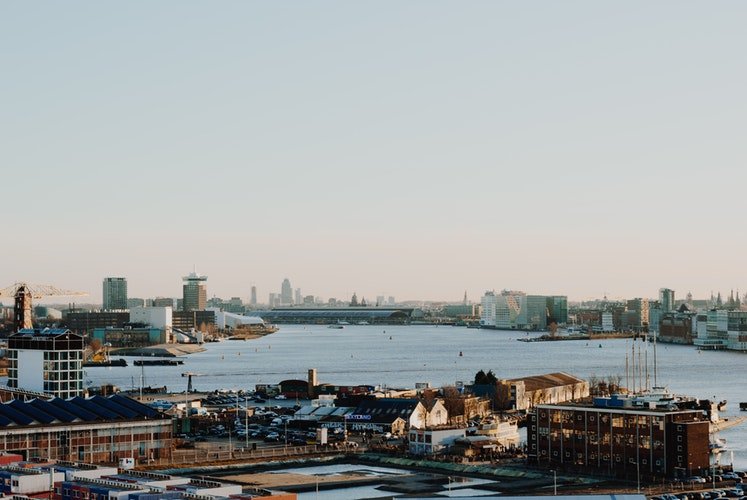
If there is one category of companies that are responsible for innovation in the Netherlands, it would have to be the start-ups. Innovation Origins is always looking for relevant innovations, therefore there is every reason to really capture the complete Dutch start-up ecosystem. Armed with the data sets of StartupDelta, we visited all Dutch provinces. In 14 episodes, published between December 24, 2018, and January 7, 2019, we’re giving an overview of the start-up ecosystem in the Netherlands. The series has been made by the journalists of cooperation PitchProducties, commissioned by Innovation Origins. Today: Noord-Holland. Read the other episodes of the series here (as far as already published).
When it comes to start-ups, there’s only one city that is by far the biggest. With over 1,600 start-ups, Amsterdam is the start-up hub of the Netherlands. Why is it that so many start-ups are located in Amsterdam and above all, how does the city distinguish itself from the rest of the Netherlands?
“Start-ups prefer to settle in a city where connections, as well as competitors, are just around the corner,” says Wouter Keij, the fund manager at Innovation Fund Noord-Holland. The province of Noord-Holland started the fund in cooperation with several knowledge institutions to support and stimulate innovative projects in the region.
Fintech
The international character of Amsterdam also contributes to a favourable start-up climate, Wouter Keij believes. Large international companies where innovation is of paramount importance mainly settle in the capital city. “Amsterdam hardly has any national competition in the field of fintech”, says Keij. Success stories like Adyen, but also fast-growing fintech companies like Dyme and Bitfury were established in the capital city. It is, therefore, no surprise that fintech is the biggest sector of the more than 1600 start-ups in Amsterdam. Bitfury was the country’s best-funded start-up in 2018.
Does everyone succeed?
However, the rosy image doesn’t mean that everything and everyone becomes successful in Amsterdam. “You only hear the success stories. That’s preceded by an endless amount of work,” says Bas Rieter. As Marketing and Community Director at venture capital Amsterdam Student Investment Fund (ASIF), Rieter guides and invests in start-ups founded by students and graduates. “An average of one in twenty new start-ups succeeds. No idea is unique, only you can distinguish yourself from the rest.”
ASIF recently made its first investment in the previously mentioned Dyme, an app that provides users with an overview of their monthly costs and possibilities to save more. ASIF manages a relatively small fund of a million euros and invests up to 100,000 per start-up. With this, a start-up can pay rent or salaries, for example. According to Rieter, it’s equally important for young entrepreneurs to receive the right guidance and to build a network. “In terms of the network of consultants and lawyers, we’re equal to many other venture capital funds.”
The next step
Joost Reimert, an entrepreneur in residence at Amsterdam Center for Entrepreneurship (ACE), also mentions the right guidance as essential for start-ups to succeed. Reimert guides students who want to start their own company. He says there’s no lack of organizations that stimulate entrepreneurship and innovation. “Incubators, accelerators, subsidy regulations and financing from the government: Amsterdam focuses on start-ups, which is noticed quickly,” says Reimert.
The financing options and guidance programs are there for a reason, of course. Ultimately, the goal is for start-ups to develop to scale-ups. Governments invest in the start-up climate because they want to create employment opportunities, says Reimert. Start-ups often consist of a handful of people, so they only have few employees. Only after the switch to a scale-up, the government profits from the success.
“The policy is to create businesses that grow. There is still a shortage of them now, but scale-ups have to become the trend and the next step for Amsterdam”, says Reimert.
‘Holland above Amsterdam’
How does the rest of the province compete with Amsterdam? According to Arthur Tolsma, coordinator of Incubator Sustainable Energy Alkmaar (IDEA), it’s not necessary to compete with Amsterdam. There are still plenty of possibilities for new start-ups outside of Amsterdam. “Sometimes the rest of the province is referred to as ‘Holland above Amsterdam’, but there are plenty of entrepreneurs who don’t want to move to the capital city.” Besides, Amsterdam is more expensive and much more crowded than the rest of the province.
In Alkmaar, there’s enough space for new, innovative ideas. The technology sector is strong and young companies like to get help from an incubator like IDEA. “We’re noticing that starting entrepreneurs need a sparring partner, to get guidance in taking important decisions,” says Tolsma.
Sustainability is an important cornerstone in the region. “We notice that start-ups in sustainable energy have a longer turnaround time. For example, Symphony Wave Power has been working to develop tidal energy for four years, but that makes sense with such innovative technology.” An important part of this is Energy Center Netherlands, a big European and internationally recognized research institute. “Research at ECN formed the basis for the start-up Symphony Wave Power.”
What can the entrepreneurs outside of Amsterdam learn from the capital city? “People from Amsterdam know very well how to sell themselves, and here we’re a little more careful, that’s a shame.” Tolsma has worked in Alkmaar as well as in Amsterdam. He emphasizes that the rest of the Netherlands should take over the Amsterdam attitude. “It’s important to make some noise, to make people hear us because plenty of great things are happening here.”

